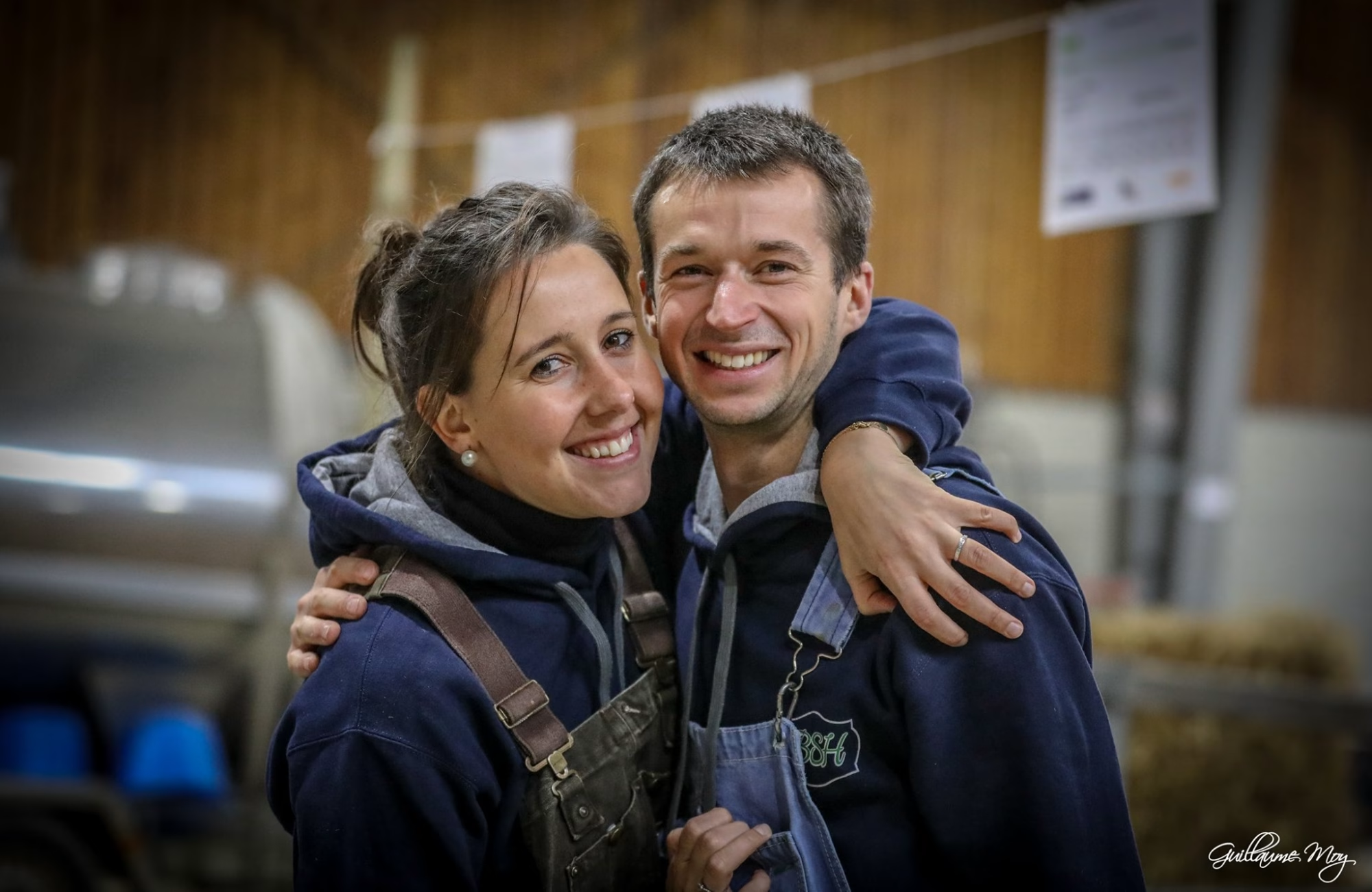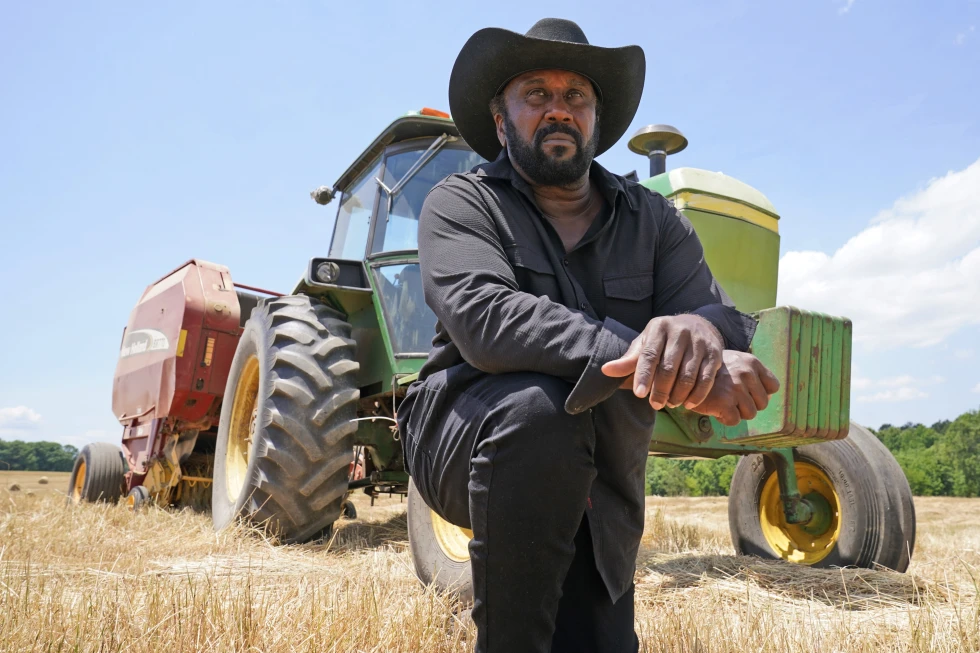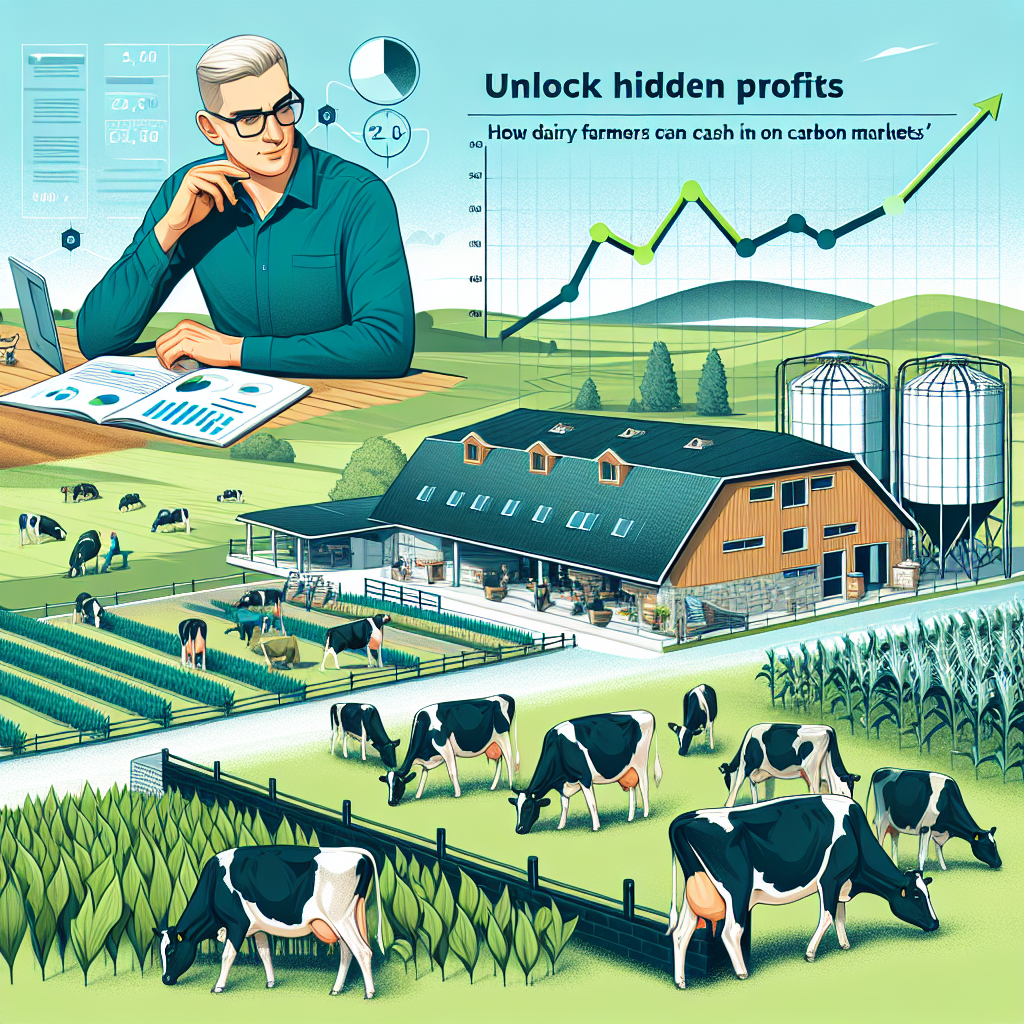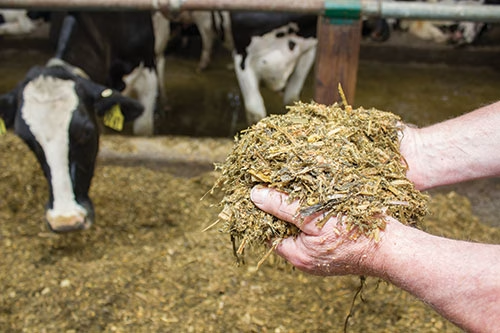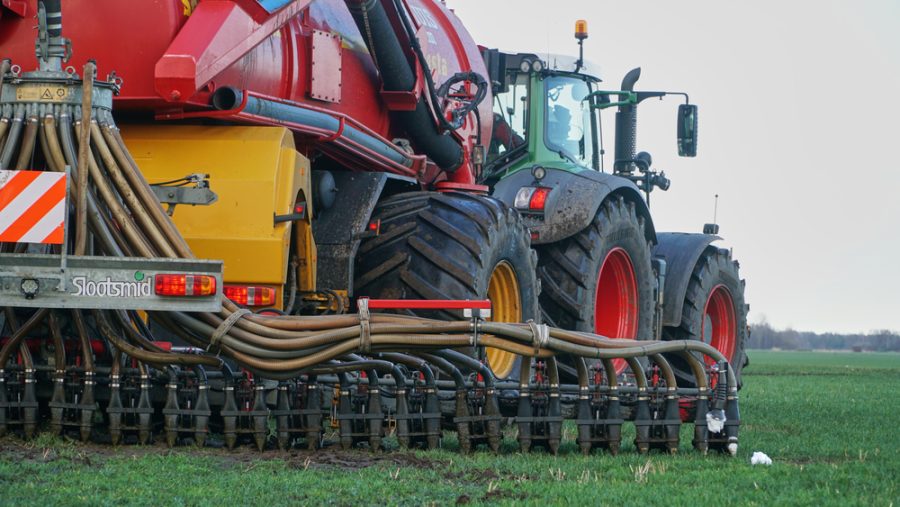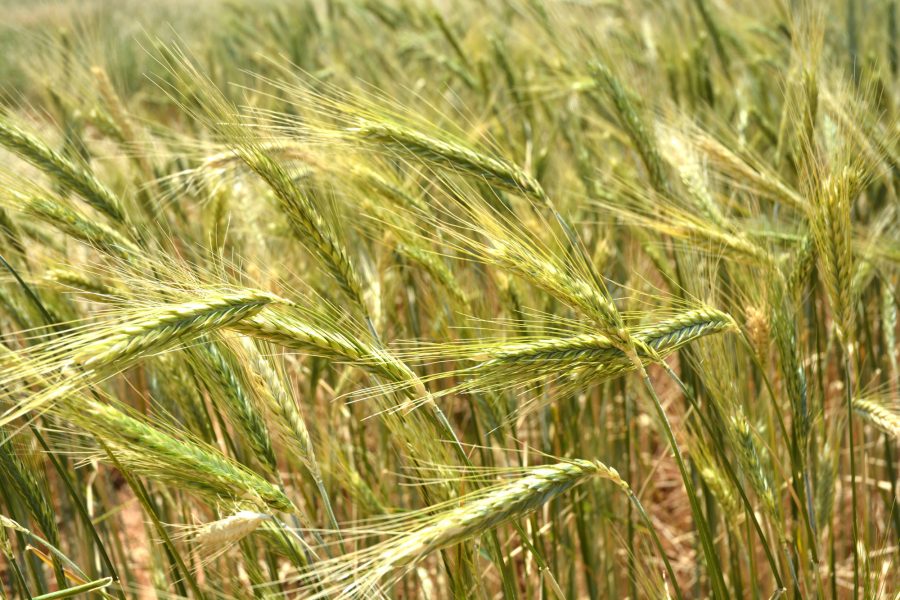Struggling with sky-high feed costs and razor-thin margins? Discover how savvy dairy farmers are slashing expenses, boosting production, and pocketing an extra $126 per cow annually. From citrus pulp to carbon credits, learn the innovative strategies that are transforming the dairy industry. Your nutritionist might just be the secret weapon you’ve been overlooking.
Picture this: you’re standing in the feed alley, staring at your latest bill. Soybean meal’s hit $540 a ton, and your profit margins are thinner than a calf at weaning. Sound familiar? Now, imagine slashing those feed costs by 22%, boosting milk production by 8%, and pocketing an extra $126 per cow annually. Too good to be true? Not for the growing number of savvy dairy farmers who’ve cracked the code on working with their nutritionists. “I used to see our nutritionist as just another expense,” admits Mike Larson, a third-generation dairyman from Wisconsin. “Now? He’s why we’re still in business – and making a profit.”
From custom-blended rations that cut methane (hello, carbon credits!) to insider tips on locking in feed prices before droughts hit, your nutritionist could be the ace up your sleeve you never knew you had. But here’s the kicker: not all farmer-nutritionist partnerships are created equal. Some are leaving serious money on the table. Do you want to see if you’re maximizing this crucial relationship or missing out on a potential goldmine? Buckle up because we’ll dive into the strategies separating the thrivers from the survivors in today’s dairy industry. Your next breakthrough might be hiding in plain sight in your nutritionist’s feed bag.
Your Barn, Your Rules: Custom Solutions for Real Dairy Challenges
Let’s chat about Linda Stoltzfus, a hardworking dairy farmer from Pennsylvania. She found herself in a real pickle with ketosis cases popping up left and right. “We were losing calves and milk checks,” she says, shaking her head. Sounds familiar, right? It’s a tough spot to be in.
But then, Linda got smart. She teamed up with her nutritionist, who introduced her to tracking dry matter intake using Milk2024 software. Just three hours a week later, she noticed something remarkable. “We slashed ketosis by 25% and saved $28,000 in vet bills last year alone!” Now, that’s what I call a win!
This isn’t some magic trick; it’s about customizing strategies that fit your operation like a glove.
Maybe you’ve been eyeing that fancy NIRS forage analyzer but are sweating over the $12,000 price tag. Well, let’s break it down. Research from Penn State shows that farms can recoup that cost in just eight months by cutting down on feed waste. That’s a pretty sweet return on investment!
Still feeling a bit hesitant? Here’s another nugget: Dairy Farmers of America is raising the plate with co-op nutritionists. Picture this: 14 Midwest farms teaming up to share the cost of a top-notch nutritionist at $150 an hour. That means you get premium advice without breaking the bank!
So, why not take the plunge? Your barn deserves the best; with the right tools and partnerships, you can tackle those challenges head-on. After all, who wouldn’t want to see their profits rise while keeping their herd healthy and happy?
Feed Hacks Your Neighbors Are Using Right Now
Alright, folks. Let’s talk about turning the tables on those sky-high corn silage prices. While you’ve been watching your profits shrink, your savvy neighbors have been cooking up some pretty ingenious solutions. Ready to peek over the fence?
Picture this: you’re standing in your feed alley, scratching your head, wondering how to keep your herd fed without breaking the bank. Sound familiar? Well, prepare to have your perspective shifted.
- Florida’s Citrus Solution: Our Sunshine State friends are swapping 20% of their rations for citrus pulp. At $85/ton versus $127 for silage, that’s a hard-to-ignore deal.
- Idaho’s Potato Play: These innovative operators turn potato waste into profit. They’re saving $68/ton while maintaining milk yields. That’s no small potatoes.
- Vermont’s Apple Approach: Green Meadow Farm is raking in $16,000 annual savings from a local cidery using apple pomace. Who knew fruit waste could fatten up the bottom line?
But here’s the kicker, folks. These aren’t just happy accidents. They are strategic moves orchestrated by farmers like you, who work closely with their nutritionists to turn overlooked resources into valuable feed.
So, what’s the takeaway here? It’s simple: one farmer’s waste is another farmer’s wonder feed. The secret sauce? A sharp nutritionist who can spot opportunity in unlikely places.
Now, I know what you’re thinking. “But my farm isn’t in Florida, Idaho, or Vermont!” No worries. The point isn’t to copy these exact solutions. The real nugget of wisdom here is to look at your local resources with fresh eyes.
What’s considered “waste” in your area? Brewery leftovers? Vegetable trimmings from a nearby processing plant? That unusual crop your neighbor grows that no one knows what to do with? Your next game-changing feed solution might be hiding in plain sight.
Remember, in the world of dairy farming, creativity pays. So put on your thinking cap, call your nutritionist, and start exploring. Who knows? Your brilliant feed hack might be the next feature in our “How’d They Do That?” column.
Now, if you’ll excuse me, all this talk of creative feed solutions has me wondering what other innovative ideas are out there waiting to be discovered. Do you have any unconventional feed strategies up your sleeve?
The Tech Tug-of-War: Gadgets vs. Gut Instinct
Alright, let’s get real for a second. We’ve all been there, flipping through a rumen sensor catalog, feeling like we’re choosing between our trusty old pickup and a shiny new Tesla. Is all this high-tech mumbo-jumbo worth it, or are we just being suckered by fancy marketing?
Well, hold onto your overalls because I’m about to hit you with some numbers that’ll make your milk meters spin:
🐄 The Wisconsin Wonder Picture this: a 500-cow herd in America’s Dairyland decided to plunge. They shelled out a cool $20,000 on sensors. Yeah, I know. That’s a lot of cheese curds. But here’s where it gets interesting:
- SARA Slayer: These gadgets dropkicked Subacute Ruminal Acidosis (SARA) by 40%. For those who dozed off during vet school, that’s like giving your cows’ tummies a superhero shield.
- Ca-ching! The result? A whopping $33,000 saved annually in lost milk and treatments. That’s right; the tech paid for itself and then some.
Now, I can hear some of you old-timers grumbling. “Back in my day, we didn’t need fancy gizmos to know when a cow was off her feed!” And you’re not wrong. There’s something to be said for that sixth sense you develop after years in the barn.
But here’s the kicker, straight from the horse’s… er, cow’s mouth. Dr. Emma Ruiz, a dairy nutritionist who’s forgotten more about rumen pH than most of us will ever know, puts it this way: “It’s not about replacing gut instinct. It’s about giving your eyes and ears digital backup.”
Think of it like this: you wouldn’t try to run your farm with just your bare hands? Of course not! You use tractors, milking machines, and other tools. These sensors are just another tool in your belt. A brilliant, data-crunching tool that never sleeps and doesn’t ask for overtime.
I’m not saying you should mortgage the farm to buy every blinking gadget. But if you’re on the fence about investing in some tech, these numbers might tip you over. After all, in the dairy game, sometimes you’ve got to spend money to make money.
So, what do you think? Are you ready to give your gut instinct a high-tech sidekick? Or are you sticking with the “if it ain’t broke, don’t fix it” approach? Either way, remember: at the end of the day, it’s about keeping your cows healthy and your business in the black. And if a little silicon chip can help with that, well… maybe it’s time to make some room in the toolbox.
Policy Perks You Can’t Afford to Miss
Hey there, busy farmer! While you’ve been up to your elbows in udders and elbow-deep in silage, the suits in Washington have been cooking some tasty treats for your bottom line. Buckle up, buttercup – we’ll dive into the policy perks you can’t afford to miss!
The Farm Bill Jackpot: Remember that NIRS analyzer you’ve been eyeing? Well, Uncle Sam wants to go halfsies with you! That’s right; the Farm Bill is dishing out grants covering 50% of precision tech costs. That’s a cool $7,500 off that fancy gadget. It’s like Black Friday came early, and it’s raining tech!
Methane: From Menace to Money-Maker Got gas? Great! No, really. Your cows’ emissions could now line your pockets. A $45/ton tax credit for methane reductions using 3-NOP supplements exists. Who knew cow burps could be so profitable? It’s like turning your herd into a four-legged crypto mine, but less confusing and eco-friendly.
The Great Soybean Swap: Soybean prices got you down? Time to say hello to your new best friend: sunflower meal. Farms are saving a whopping 22% by making the switch. It’s like finding a coupon for your feed bill, but better – because who doesn’t love a good sunflower?
But wait, there’s more! (Sorry, I couldn’t resist the infomercial vibe there for a second.) Mark Johnson, a sharp cookie from Colorado, shares this gem: “We locked in 2025 corn prices early. With drought looming, that move alone will save $50k.” Now, that’s what I call thinking ahead! Mark’s got a crystal ball, but instead of seeing the future, he’s seeing dollar signs.
So, what’s the takeaway here? Remember to look at the bigger picture while you’re busy keeping your herd happy and healthy. These policy perks aren’t just nice-to-haves—they’re game-changers that could mean the difference between scraping by and thriving.
Think about it: Between the tech giants, the methane credits, and smart feed swaps, you could be looking at savings that’d make your accountant do a happy dance. And let’s be honest, when was the last time you saw your accountant dance?
Now, I know what you’re thinking. “But I’m too busy to keep up with all this policy stuff!” I hear you. But here’s the thing: you can’t afford not to. These perks are like finding free money in your coverall pockets – but only if you grab it.
So, here’s your homework (don’t worry, there’s no pop quiz):
- Check out those farm bill grants. Your next tech upgrade might be closer than you think.
- Talk to your nutritionist about 3-NOP supplements. Turn those methane emissions into cold, hard cash.
- Explore sunflower meal options. Your feed bill (and your cows) might thank you.
Remember, sometimes minor changes can yield the most significant rewards in the dairy game. So why not milk these policy perks for all they’re worth?
Now, if you’ll excuse me, all this talk of sunflowers has me craving some seeds. Maybe I’ll start my little dairy-friendly crop right in the backyard. (Okay, probably not, but a farmer can dream, right?)
The Green Dilemma: When Sustainability Squeezes Your Milk Check
Let’s talk about the elephant in the parlor – or should I say, the methane-belching cow? Going green sounds excellent on paper, but when your margins are tighter than a new pair of coveralls, it can feel like you’re being asked to milk a stone.
Picture this: You’re staring at your herd, wondering if you should pat yourself on the back for that 30% methane drop from using 3-NOP or kick yourself for the 4-6% milk yield dip that came with it. Talk about a dairy farmer’s Sophie’s choice!
But hold your horses (or cows, in this case). Before you start thinking sustainability is just a fancy word for “watch your profits vanish,” let’s break it down:
The Good:
- 30% less methane = Happy planet, happy regulators
- Carbon credits at $50 a pop = Cha-ching!
The Bad:
- 4-6% yield drop in high-producing Holsteins = Ouch, right in the milk check
You might be thinking, “Great, so that I can save the planet or my farm, but not both?” Not so fast, cowboy (or cowgirl). Our dairy nutrition guru, Dr. Ruiz, has a trick up her sleeve.
“We balance it with bypass fats,” she says, cool as a cucumber in a dairy case. Is it perfect? Nope. But it’s a start. And those carbon credits? They’re not just feel-good stickers – they’re cold, hard cash in your pocket.
Think of it like this: You’re no longer a dairy farmer. You’re a climate change superhero in rubber boots. And every superhero needs a sidekick – in this case, those bypass fats and carbon credits, helping you fight the good fight without hanging up your milk pail.
But let’s get real for a second. This isn’t just about doing what feels good. It’s about staying ahead of the curve. Because let’s face it, sustainability isn’t just a buzzword – it’s the future of farming. And the farmers who figure out how to go green without going into the red? They’re the ones who’ll be laughing at the milk bank.
So, what’s a savvy dairy farmer to do? Here’s your game plan:
- Embrace the 3-NOP, but…
- Team up with your nutritionist to balance those bypass fats
- Cash in on those carbon credits like they’re lottery tickets
- Keep your eyes peeled for the next big thing in green dairy tech
Remember, folks – sustainability and profitability aren’t mutually exclusive. They’re more like a good pair of work boots – it might take a bit to break them in, but once you do, you’ll wonder how you ever got along without them.
Now, if you’ll excuse me, all this talk of green farming has me wondering – do cows prefer solar panels or wind turbines as shade structures? (Just kidding, but there might be a research grant in that!)
Financial Breakdowns: Crunching the Numbers
| Cost Category | Survey Results | Survey Results Indexed to August 2024 | Change ($/hl) | Change (%) |
|---|---|---|---|---|
| Total Costs | 93.09 | 90.36 | -2.73 | -2.9% |
| Purchased Feed | 23.26 | 20.41 | -2.85 | -12.3% |
| Non-Feed Costs | 69.83 | 69.95 | 0.12 | 0.2% |
Let’s dive into the nitty-gritty of the financial side. When considering new tech investments for your dairy operation, it’s crucial to break down the costs and potential returns. Here’s a more detailed look:
Initial Investment
- NIR forage analyzer: $12,000 upfront cost
- Automated milking system: $150,000-$200,000 per unit
- Smart collars for herd monitoring: $80-$150 per cow
Potential Returns
- NIR analyzer: Farms recoup costs in 8 months through reduced feed waste[3]
- Automated milking: 18% increase in milk production reported by some farms[2]
- Smart collars: 0.3% boost in milk fat content observed in some herds[7]
Remember, these are ballpark figures. Your mileage may vary depending on herd size, current efficiency, and local market conditions. It’s worth noting that a Wisconsin herd investing $20,000 in rumen sensors saw a whopping $33,000 annual savings in lost milk and treatments. That’s a pretty sweet return on investment!
Implementation Guide: Steps to Tech Integration
| Aspect | Traditional Approach | Modern Approach |
|---|---|---|
| Technology Integration | Manual systems, limited technology use | Automated systems, extensive use of IoT and AI |
| Diversification Strategies | Focus on single product (milk) | Multiple revenue streams (value-added products, agritourism) |
| Farm Management Tools | Paper records, manual tracking | Digital farm management software, real-time data analytics |
| Sustainability Practices | Conventional methods | Eco-friendly practices, focus on carbon footprint reduction |
| Risk Mitigation Strategies | Limited, often reactive approaches | Comprehensive, proactive risk management |
Ready to take the plunge? Here’s a step-by-step guide to implementing new tech on your dairy farm:
- Assess your needs: Start by identifying your biggest pain points. Is it feed efficiency? Labor costs? Herd health monitoring?
- Research options: Look into technologies that address your specific needs. Don’t just go for the shiniest new gadget.
- Consult experts: Talk to your nutritionist, veterinarian, and other dairy farmers who’ve adopted similar tech.
- Run the numbers: Use the financial breakdown above as a starting point. Calculate your potential ROI based on your farm’s specifics.
- Start small: Consider piloting the technology on a portion of your herd before full implementation.
- Train your team: Ensure all staff are properly trained on the new systems. Remember, tech is only as good as the people using it.
- Monitor and adjust: Keep a close eye on performance metrics. Be prepared to make adjustments as you learn.
- Stay updated: Technology evolves rapidly. Stay informed about updates and new features that could further boost your efficiency.
Remember, implementing new tech isn’t just about the hardware. It’s about integrating it into your daily operations and using the data it provides to make smarter decisions. As one savvy farmer put it, “it’s not about replacing gut instinct. It’s about giving your eyes and ears digital backup.”[4]
Now, get out there and start milking that technology for all it’s worth!
Small Farm, Big Dreams: What’s Your Excuse Now?
Alright, I can hear the gears turning in your head. “Sure, all this fancy tech and sustainability stuff sounds great, but I’m running a 50-cow operation, not a dairy empire!” Hold your horses there, partner. Before you write off these ideas faster than a calf gulps colostrum, let me introduce you to some folks who might change your mind.
The New York Dozen: Strength in Numbers
Picture this: 12 small farms in New York, probably not much different from yours. Individually, they’re David against the Goliath of big ag. But together? They’re like the Avengers of the dairy world. These savvy farmers pooled their resources and snagged $31,000 in carbon credits. That’s not chump change, folks!
Think about it. What could your farm do with a slice of that pie? New equipment? Better feed? A vacation that doesn’t involve milking cows? (I know, I know, what’s a vacation?)
The Hmong Collective: A Picture’s Worth 1,000 Words (And 0.3% More Milk Fat)
Now, let’s mosey on over to Minnesota. The Hmong dairy collective there faced a unique challenge. Many of their farmers weren’t fluent in English. You might think that’d be a more significant barrier than an electric fence.
Wrong! These innovative folks devised picture-based feed protocols—no English required! The result? They boosted their milk fat by 0.3%. I can practically hear your milk checks getting fatter already.
So, What’s Your Story Going to Be?
I can almost hear you saying, “But my situation is different!” And you’re right. Every farm is unique, like a cow’s spot pattern. But here’s the kicker – that’s your superpower.
- Are you the small farm that revolutionizes local co-ops?
- Could you be the one who invents the next great picture-based farming app?
- Maybe you’ll start the trend of mini-collectives in your county?
The point is that size isn’t everything in the dairy game. It’s about being more innovative, not bigger. It’s about looking at what you’ve got and thinking, “How can I milk this for all it’s worth?” (The pun was intended.)
Your Homework (Don’t Worry, There’s No Quiz)
- Look around. Who are your neighboring farms? Could you form your own “Dairy Dozen”?
- What unique challenges does your farm face? There might be an innovative solution waiting to be discovered.
- Think about your strengths. Small can mean nimble. How can you use that to your advantage?
Remember, every big idea starts small. Even the largest bull in your herd was once a wobbly-legged calf.
So, what’s it going to be, farmer? Will you sit on the sidelines, or are you ready to join the big leagues on your terms?
Now, if you’ll excuse me, all this talk of innovation has me wondering – do you think cows would appreciate motivational posters in the barn? “Hang in there” with a cat might not cut it, but “Every day is an udder opportunity” could be a winner!
The Bottom Line
Alright, folks, let’s bring this barn dance to a close. We’ve covered a lot of ground today, from feed hacks that’ll make your wallet moo with joy to tech investments that pay off faster than a heifer reaches breeding age. We’ve talked about milking those policy perks for all they’re worth and even how to turn your cows’ gas into cold, hard cash.
But here’s the real scoop: the dairy game is changing, and it’s changing fast. You can either ride the wave or get left in the dust. And let me tell you, dust doesn’t pay the bills.
Remember:
- Innovation isn’t just for the big guys. Small farms are making big moves.
- Sustainability and profitability can go hand in hand. It’s not always easy, but it’s necessary.
- Your nutritionist isn’t just a feed formulator – they’re your secret weapon in this new dairy frontier.
So, what’s your next move? Here’s what I want you to do:
- Call your nutritionist today. Not tomorrow, not next week. Today. Ask them about one new strategy you can implement this month.
- Reach out to your neighbors. Can you form a collective? Pool resources? Share knowledge?
- Investigate those policy perks. There’s money on the table. Are you going to leave it there?
The future of dairy farming isn’t just about producing milk. It’s about being innovative, adaptable, and a little bit daring. It’s about seeing opportunities where others see obstacles.
You have the knowledge and the grit. Now, it’s time to combine them and show the world what real dairy innovation looks like.
So, what are you waiting for? The cows won’t milk themselves, and the future won’t stay. Get out there and make your mark on the dairy world.
Who knows? The following excellent dairy success story might just be yours, with the help of your nutritionist. Now get to it!
Key Takeaways:
- Collaborate closely with nutritionists to develop custom feed strategies and reduce costs
- Explore regional feed alternatives like citrus pulp, potato waste, or apple pomace to save up to $68/ton
- Invest in precision technologies like NIR analyzers and rumen sensors for better herd management and cost savings
- Take advantage of Farm Bill grants for up to 50% off precision tech costs
- Consider 3-NOP supplements to reduce methane and potentially earn carbon credits
- Form collectives with other small farms to access carbon credit markets and share resources
- Implement picture-based feed protocols to overcome language barriers and improve efficiency
- Balance sustainability efforts with profitability by using strategies like bypass fats
- Stay informed about policy perks and emerging technologies in the dairy industry
- Embrace innovation and adaptability to remain competitive in a changing market
Summary:
This comprehensive article explores innovative strategies for dairy farmers to boost profitability and sustainability. It covers a range of topics, from alternative feed solutions and cutting-edge technology adoption to leveraging policy perks and addressing environmental concerns. Through real-world examples and expert insights, the article demonstrates how farmers of all sizes can benefit from closer collaboration with nutritionists, smart tech investments, and creative problem-solving. Key highlights include regional feed alternatives saving up to $68/ton, tech investments yielding $33,000 annual savings, and small farm collectives accessing carbon credit markets. The article also provides practical implementation guides and financial breakdowns to help farmers make informed decisions. Ultimately, it encourages dairy farmers to embrace innovation, sustainability, and collaboration to thrive in a rapidly changing industry.
Learn more:
- Top 12 Most-Read Bullvine Articles of 2024: Insights and Controversies Reshaping the Dairy Industry
- Breaking Down Blondin Sires’ Meteoric Rise in the AI Industry
- The Dark Side of Dairy Business: Seven Notorious Criminals in the Dairy Industry Unveiled
 Join the Revolution!
Join the Revolution!
Bullvine Daily is your essential e-zine for staying ahead in the dairy industry. With over 30,000 subscribers, we bring you the week’s top news, helping you manage tasks efficiently. Stay informed about milk production, tech adoption, and more, so you can concentrate on your dairy operations.







 Join the Revolution!
Join the Revolution!




